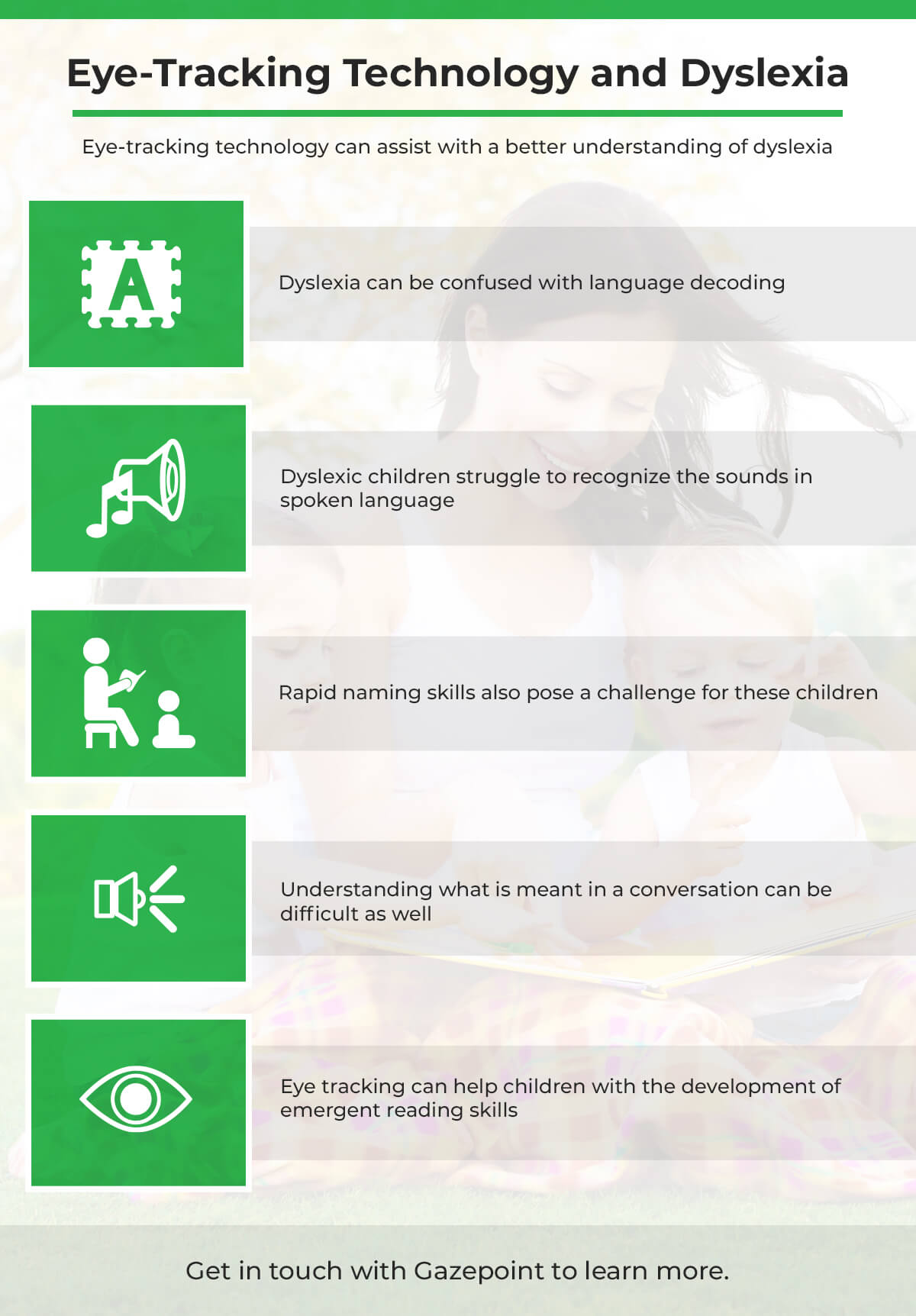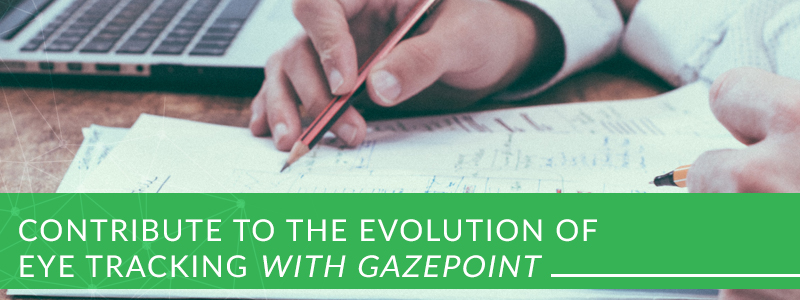
Eye-Tracking Technology and Dyslexia
Gazepoint provides affordable solutions for eye tracking and neuromarketing so you can determine where a user looks, how long they look at certain elements, and how their gaze travels over an image. From physical health to emotional responses, you can gain more detailed insights into your users so you can provide them with the information they want. Eye-tracking can assist with a better understanding of dyslexia, as well as identifying it earlier and providing appropriate treatment measures.

Dyslexia at a Glance
- Children with dyslexia are not more at risk of developing vision problems than children without dyslexia.
- Dyslexia is actually a language-based learning difference, not a problem with eyesight.
- While vision problems don’t cause dyslexia, they can co-occur in the same child.
- Children who have dyslexia and also have vision correction with glasses or contacts will still show signs of dyslexia.
Decoding Issues vs. Dyslexia
Some people believe that those who have dyslexia see letters backwards,jumbled in words, or floating on the page. The truth, however, is that these specific issues have more to do with children who struggle to decode words rather than children who are struggling with dyslexia. Our natural instinct is to focus on the middle of something first, such as a picture or a face. When children are taught to read and decode words, they are being taught skills that require them to go against this instinct. Additionally, children may also have a hard time distinguishing between letters that are mirror images of each other, such as p and q.
Challenges Posed by Dyslexia
Typically, children who are dyslexic struggle with three specific areas:
- Phonological awareness
- Rapid naming
- Semantic skills
Phonological Awareness
Phonological awareness is the ability to recognize and utilize the sounds in spoken language. It is the foundation for learning how to read, and while some children will naturally adopt this skill, others must be taught. Preschool children develop phonological awareness as they identify rhyming words, count the number of syllables in a word, and also recognize which sounds repeat themselves in an alliterative statement.
Rapid Naming
Rapid naming is the ability to quickly and accurately name aloud a series of familiar items. The success with which a child can do this can indicate their future reading skills. Rapid automatized naming (RAN) is a particular test that is used in comprehensive reading evaluation of children. They can also assist with early identification of children who are at a higher risk for reading problems.
Semantic Skills
Semantics is the relationship between meaning and the different parts of spoken language. From words and phrases to narratives and signs, semantic skills enable the listener to fully understand what has been said. When a child lacks appropriate semantic skills, they may exhibit difficulty with following instructions, understanding questions, and following conversations.
Eye Tracking
Tracking is the ability of the eyes to move smoothly across a section of text. When a child’s eyes don’t track properly, then learning to read and developing emergent reading skills can be very difficult. Additionally, problems with tracking can slow the development of normal reading skills and make it a tiresome process.
Improve Eye Tracking
It is important to improve eye tracking, as this can assist dyslexic children who are learning to read. Eye tracking can gather data on a broader range of people who struggle with dyslexia, which in turn can assist with earlier identification in young children. Since eye tracking is non-invasive, affordable, and customizable, it presents a great opportunity to study and help those with dyslexia.
Learn more about eye-tracking software options and technology bundles with Gazepoint. Contact us today to place your order.



